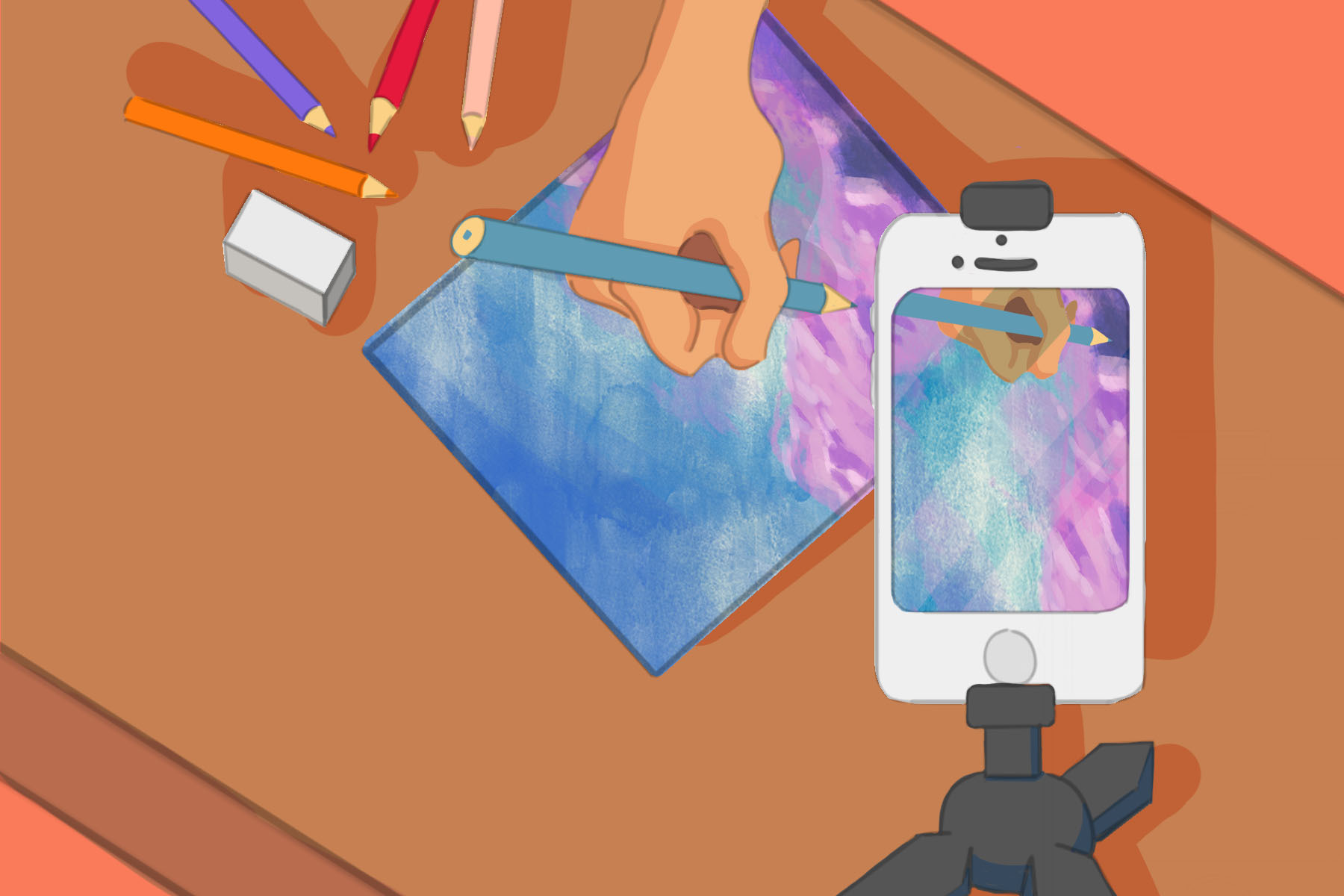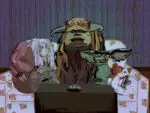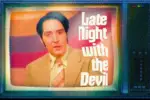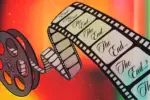The apartment is a wasteland: laundry is strewn from the bedroom to that crevice behind the bathroom door, dishes are overflowing from the sink, blinds are closed, lights are off. While in a stressed-out quarantine, you dismiss the clutter and bring your attention to the television looming above the couch. It’s 7 p.m. and you’re ready to binge, assuming that content exists solely to comfort, to backload worries and delay the confrontation with the dreary world outdoors. Although the newly prescribed lifestyle of a hermit may precipitate greater escapism, it also welcomes the opportunity for self-exploration. It is impossible to regard film and television without one’s identity in mind, especially when so much of our quarantined lives are defined by the latest Netflix show. In an attempt to categorize and demystify this situation, an obscure word has found its way into my everyday thoughts: selfilm.
It’s as if the term appeared out of thin air, without much precedent or even a definition. Although “selfilm” is listed on neither Dictionary.com nor Merriam-Webster’s online database, the word has proliferated as a broad expression across the internet. It may refer to selfies taken on a disposable camera — without the privilege of a preview screen — a selfie video, a recording of oneself skating or even filming deer hunts alone. However, as I stumbled onto the website of “Festival de cine selfie,” a 2018 Spanish film festival, I discovered a more comprehensive meaning for the word: a self-portrait crafted as a short film in which the creator is the protagonist. Unlike the other uses of selfilm, the one offered by this program connotes a narrative focused on the creator. Not only is the face of the recorder captured, but so is their person, the elements that define who they are.
Filmmaking is my first love, and one that has reshaped my identity more than once. In high school, I made two short films all by myself that changed my life. One of them involved how much I despised marching band, while the other was an abstract horror about homosexuality. The former was entirely fictional aside from my actual band membership, but it had a deep impact on me personally; I quit the band shortly after completing the project.
The latter film, however, resulted in a more superficial reckoning. Like anyone else, I’d like to think I’m a friendly guy to be around, given my wide grin and the like. Nevertheless, as the protagonist of a psychosexual nightmare, I found my face — usually beaming among family and friends — contorted beyond recognition in a series of grimaces, expediting a revelation about my versatility as an individual within the bright spaces and dark depths where my body was able to lower itself.
The benefits of these realizations are complicated. At once, making a film by yourself isn’t necessarily going to change who you are. However, it might be a great way to distance yourself from personal decisions. Selfilm opens the door for wider applications of Solomon’s paradox, which describes how people make wiser decisions for others than for themselves when dealing with similar problems. To film oneself is to recreate the self, as if the person captured through the lens is a stranger to the cameraman. It becomes an act of othering who you are without sacrificing one’s unique identity.
To film is to collaborate. No matter the project, the filmmaking process almost always requires an assembly line of workers to create a cohesive picture. As a consequence, the artist is reduced to a single pixel in the larger screen. Nevertheless, concurrent with the rise of affordable cameras, smartphones and digital copies, the existence of film, heretofore the product of a complex system of labor, has been reduced to a single whim. In addition to this revolution, the increasing ability of a single actor to produce a moving image necessitates a new term to describe such a phenomenon.
Every time someone works with a camera, they are simultaneously a creator, technician, artist and automaton. To rotate the lens to face toward oneself, however, is to force a confrontation with the exhibition of their personality, whether they like it or not. Imagine the camera is held by paparazzi, eager to snap some deviant behavior for the tabloids to scream. You are the paparazzi now.
One might find this explanation befitting another realm of film: the auteur. Although auteur theory, which describes a director as the supreme creative author of a production, may come to mind in discussion of selfilm, what separates the two is the nature of the confrontation taking place. While the preoccupation of the auteur is to posit one’s greatness or strength on the world, selfilm does not bolster a cult of personality but rather deconstructs the person themselves. The process does require a considerable engagement with the ego, but the ego is also under scrutiny. This introspection requires a defined aesthetic that leans toward realism and prohibits veiling an individual’s truth.
Of course, truth is subjective, and one need not limit selfilm to a narrow definition. Perhaps you’d like to explore what you look like in normal social situations, or maybe some outlandish behavior appeals to you. Regardless of the chosen avenue, don’t make the film about the mask you put on to feel accepted. Be brave, let your guard down; wear makeup, or don’t, if that’s what you want, or wear a funky outfit you’ve always wanted to try. As long as the project is approached without the strings of social expectations holding you back, selfilm is yours to make.
Mind you that this isn’t a documentary; one need not give their life story or spew sententious advice. Rather, through the framework of narrative, one crafts a raw portrait of the self, uninhibited by the strictures of character or the obligations of plot. Of course, a form will develop, but view it more as a plastic cast of the soul. Whatever shape the mold takes, it takes.
Through an unconstrained approach to capturing the self, the final product will yield an original, personal story that nevertheless speaks to an inner truth. When someone captures that different personality on camera, without consideration for a larger team, the insight of a director or the mechanics of an actor, one reflects on who it is they present to the world and who they find themselves to be. If the person onscreen seems alien to you, maybe your identity is in a state of flux. Don’t resist it. Let the strangeness wash over you. Change is power, and it couldn’t be a better time to stay strong.
People live in a reactive world. Our behavior is dependent on those of our family, friends as well as the worlds we watch beyond the black mirror. During a crisis, it can be tempting to remain stagnant, both in our conceptions of self and how we consume media. Taking a step back from that behavior to gain a new perspective of yourself could be just the thing to break the monotony and welcome new possibilities when we need them the most.

















